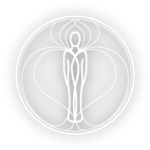We cannot consciously change,
what we are not aware of.
For Bodywork, this means: Clients can only (sustainably) change, what they can sense and understand in their body.
This is true for very different goals and wishes that clients might bring to our sessions:
- Physical Pain – Long term pain reduction is only possible if clients can sense and understand where the pain is coming from AND what they can do (or stop doing) to change this.
- Old Postures – clients can only change an unhealthy posture if they
- can perceive that the old posture is problematic and understand why they are still entering it again and again
- feel the changes a better posture brings to them
- and understand what they can actively do to support this posture in their daily life
- Relaxation – Muscles, Fascia and Myo-Fascial-Trains need the impulse from our nervous system to let go (“Relaxation is an active process”) and this impulse needs our perception of these structures. It is impossible to relax physical structures if we are unaware of their tension.
- Personal Growth – it always takes a deepening of our self-awareness and understanding to cultivate a new consciousness, a new presence and aliveness in our life.
One (often overlooked) task for Bodyworkers is:
Supporting clients to sense, feel
and be more in connection with of themselves.
If awareness and perception form the base of sustainable change then one of our most important jobs as bodyworkers is supporting clients to become more aware and in contact with themselves.
But how can we do this in a treatment?
In Holistic Bodywork we are using two channels to do this:
- Hands-on: By choosing the qualities of touch, techniques and tools that support our clients to connect with themselves – this is a dance based on the constant adjustment of what we are doing
- Hands-off: We are using simple Coaching-Tools, Questions and Impulses that support clients in feeling and sensing themselves – during our introductory conversation and YES, also during our treatment.
Today we want to show you 3 simple Coaching-Tools you can use right away. Participants from our training regularly report that these simple tools helped deepen their treatments and connection to their clients.
3 simple Coaching-Tools (and a guided meditation)
These Tools are very simple. So much so, that their impact can easily be underestimated. That is why I want to invite you to experience them right now (no matter where you are, whether you are sitting, lying or walking).
1. Tool: What is “THAT” like (for you)?
How you can use this question:
Ask your client a short, concrete, open question:
- “How are your feet like?”
- “What is it like to be aware of your breath?”
- “What is this pressure on your shoulders like for you?”
- …
How does this tool work? To answer this question, clients have to turn their awareness towards the body part in question. By not giving them a prime (“This is good, isn’t it?”) the client can openly perceive how they experience whatever it is we are pointing to (body part, experience, touch…).
2. Tool: Choose between these options
How you can use this tool
Offer your client multiple options for a specific technique:
- “Would you like more pressure, less pressure or is the pressure good as it is?”
- “Which position is more comfortable for you – the hand at the front of the thigh or at the side?”
- (While you are placing the legs on the ground and presenting the options) “What feels better: the neutral position of the legs, compression of the legs or extension of the legs?”
- …
How does this tool work? To answer this closed question, the client must sense which option is best for him or her. This is best suited for clients who have difficulties to sense since this question offers a clear frame.
3. Tool: Mirroring and what is that like for YOU?
How you can use this tool: Mirror a client what you are PERCEIVING (no interpretation) and invite her explicitly to perceive what that is like for her:
- “I see you breathing more deeply… what is that like for you?”
- “Your shoulders seem to relax… are you feeling that too?”
- “It seems as if your shoulder is resting on the floor differently… how are you perceiving that?”
- …
How does this tool work? By sharing our perception (what we are hearing, sensing and seeing) we support the client to direct their perception towards what we are mirroring. By explicitly inviting them to check what that is like for them, they can check if they agree with our perception or not.
Enjoy
We hope these simple tools can support you in your practice.


